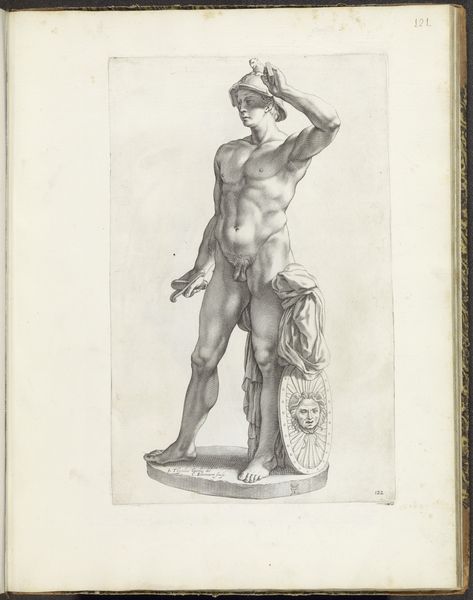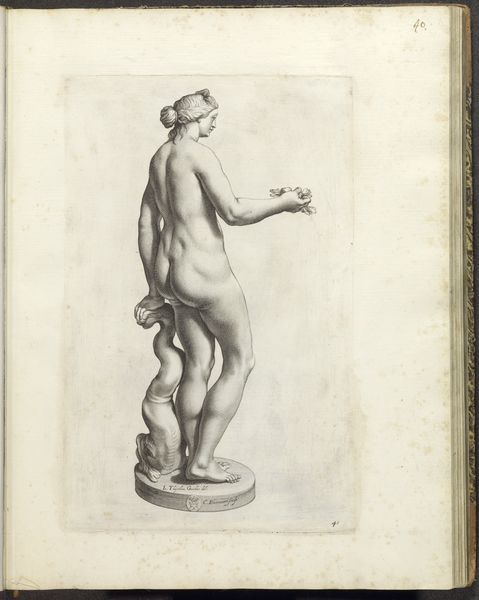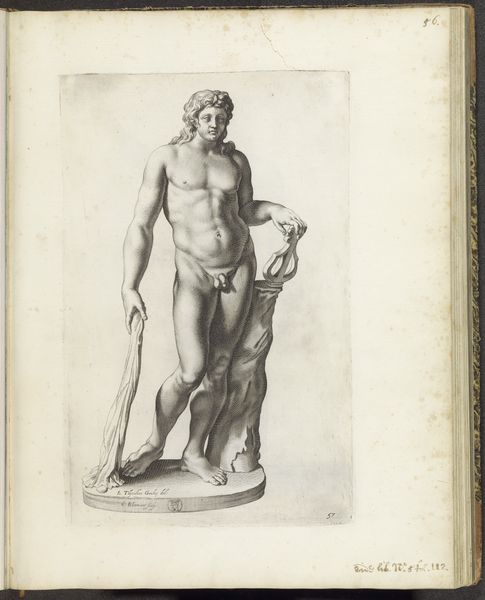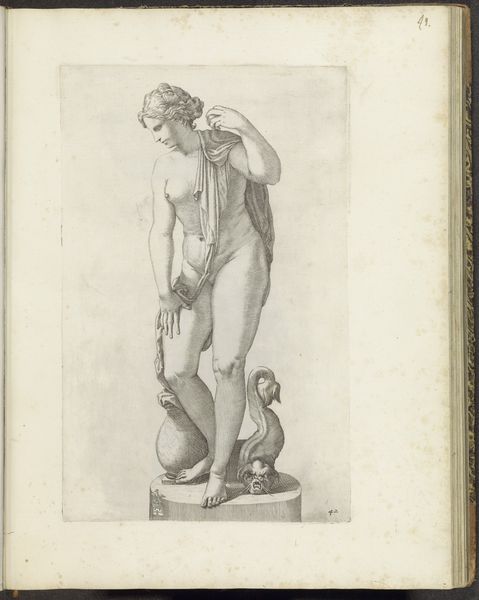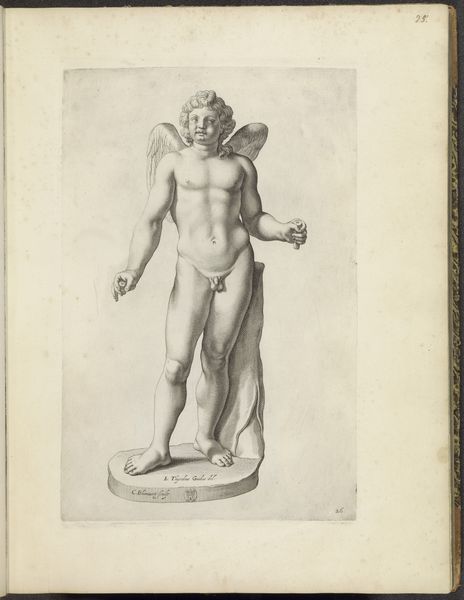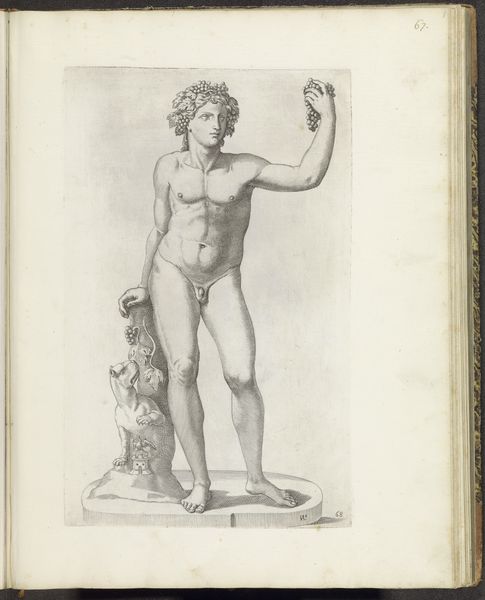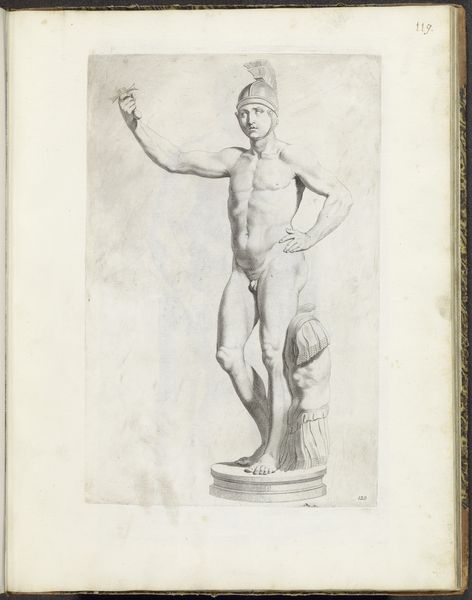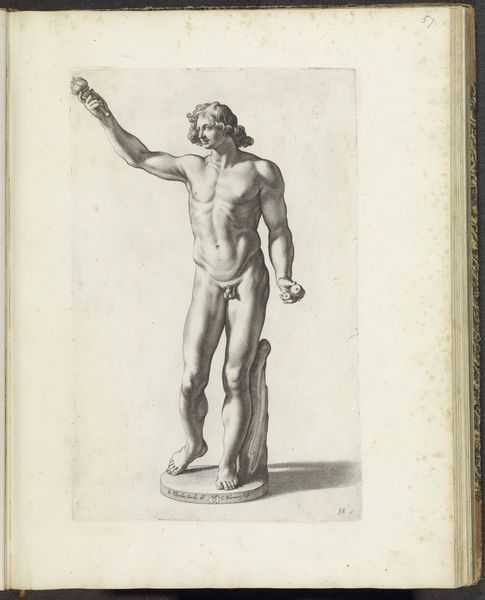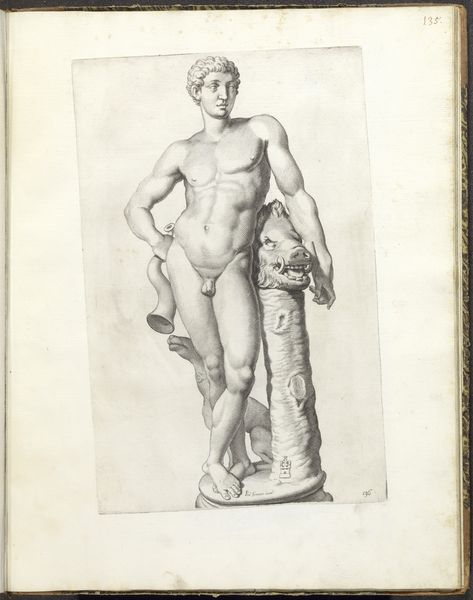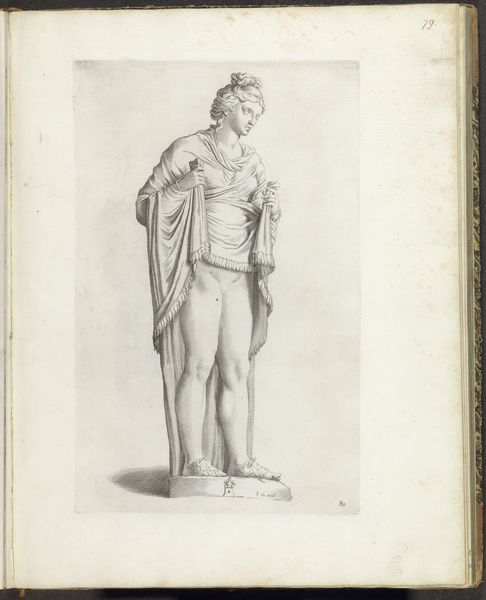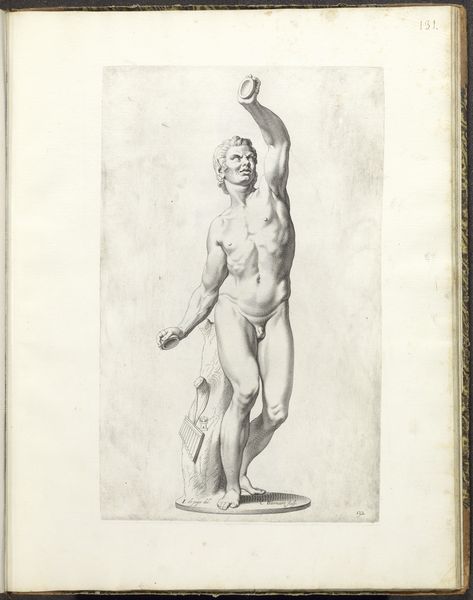
drawing, pencil
#
portrait
#
drawing
#
baroque
#
pencil sketch
#
classical-realism
#
figuration
#
form
#
11_renaissance
#
coloured pencil
#
pencil
#
line
#
academic-art
#
nude
Dimensions: height 363 mm, width 230 mm
Copyright: Rijks Museum: Open Domain
Curator: Today we're looking at Cornelis Bloemaert's "Statue of Apollo with Lyre," a drawing created sometime between 1636 and 1647. It's currently held in the Rijksmuseum collection. What strikes you initially about this piece? Editor: Well, the immediate impression is one of classical idealism, rendered with almost anatomical precision. There's a certain coldness, though, a remove from the vitality I associate with Apollo. It feels like a study rather than a celebration. Curator: That's an astute observation. It exists as part of a much broader moment where the very foundations of artistic institutions became intrinsically linked with social identity, essentially acting as gatekeepers by setting specific, restrictive parameters for what counted as not just good art but also socially meaningful. Considering these contexts, what meanings did academic art produce and what were the cultural negotiations for art-making in the service of those particular meanings and interests? Editor: Right, the drawing emphasizes this idealized, almost hyper-masculine form, connecting back to antiquity but also reinforcing certain power dynamics of the time. What's fascinating to me is the enduring symbolism of the lyre. It represents not just music, but also harmony, balance, and the civilizing influence of the arts. Even within its static representation, that potential for resonance is palpable. Curator: Exactly, Bloemaert draws heavily from the traditions of classical realism, situating Apollo as both an aesthetic and a socio-political ideal. How might this resonate, or perhaps clash, with contemporary understandings of identity and power? How do visual vocabularies change in relationship to shifting ideas? Editor: Well, in a contemporary context, the unquestioning acceptance of a single, "ideal" form is inherently problematic. The power lies in unraveling the codes that art encodes – the psychological weight, cultural biases embedded within that supposedly objective representation of beauty and even goodness. The act of rendering this god, with all the supposed perfection the god symbolizes, invites closer interrogation. Curator: Precisely. Looking through the lens of modern intersectional theories reveals those entrenched values that are deeply ingrained in Western art historical tradition, offering up meaningful perspectives. Editor: Ultimately, this piece serves as a reminder that even seemingly timeless symbols are constantly being reinterpreted, their meanings shifting with the tides of cultural change.
Comments
No comments
Be the first to comment and join the conversation on the ultimate creative platform.
